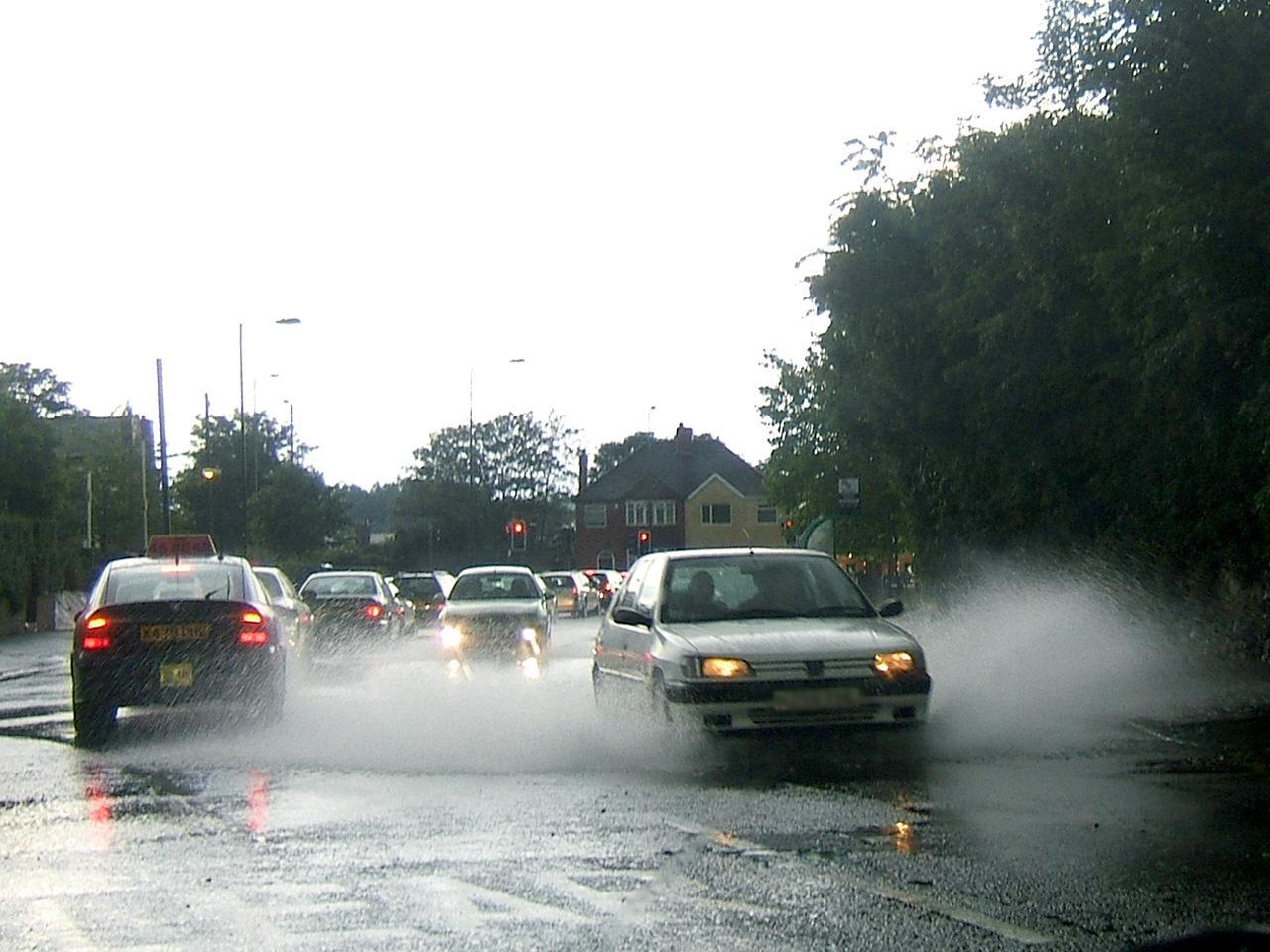June was one of the rainiest months on record in several areas of the country. July is already giving June a run for its money and with kids out of school, the roadways are more congested. Knowing how to navigate a vehicle safely through flooded roadways helps drivers avoid breakdowns and accidents. Experts recommend taking a cautious approach when driving during floods.
A flood can occur anywhere and though waters sometimes rise gradually, flash floods happen far too often, striking suddenly and covering roadways in mere minutes. According to the Federal Emergency Management Agency, a flash flood is the top weather-related killer in the United States. Most fatalities that occur during a flood are caused by drivers trying to pass through deadly waters instead of avoiding the area.
The powerful force of water can overtake a vehicle driving during a flood. If an area is barricaded, avoid it because those blockades are there for a reason. In addition, avoid driving through standing water in parking lots or on roads. It takes just 12 inches of moving water to sweep the typical automobile off a road. Drivers who manage to remain on the roadway may find themselves with stalled engines.
When an alternate route is not available, drive slowly through the water, avoiding any items heading downstream that may trap or crush the vehicle. Estimate the depth of the water and if it seems to reach the wheel rims, test the brakes on a clear section of road while traveling at low speed. If brakes are wet and are not operating properly, use the left foot to press the brake pedal gently while maintaining vehicle speed with the right foot. This will dry the brakes.
If the vehicle stalls in deep water realize that permanent engine damage may occur when the vehicle is restarted. If attempted restart fails and you are trapped in water that is rising, roll down the window or open the door to get out of the car and move to higher ground. If you cannot exit the vehicle safely, ask a passerby for help or dial 911 for emergency assistance.
When forced to travel through flooded areas, avoid water containing downed electrical or other power lines because electric current travels through water. Do not talk on the phone or text unless in an emergency situation. Get to a safe place as quickly as possible and have a professional inspect the vehicle for damage.
*Photo Courtesy of Lee Jordan via Creative Commons License

